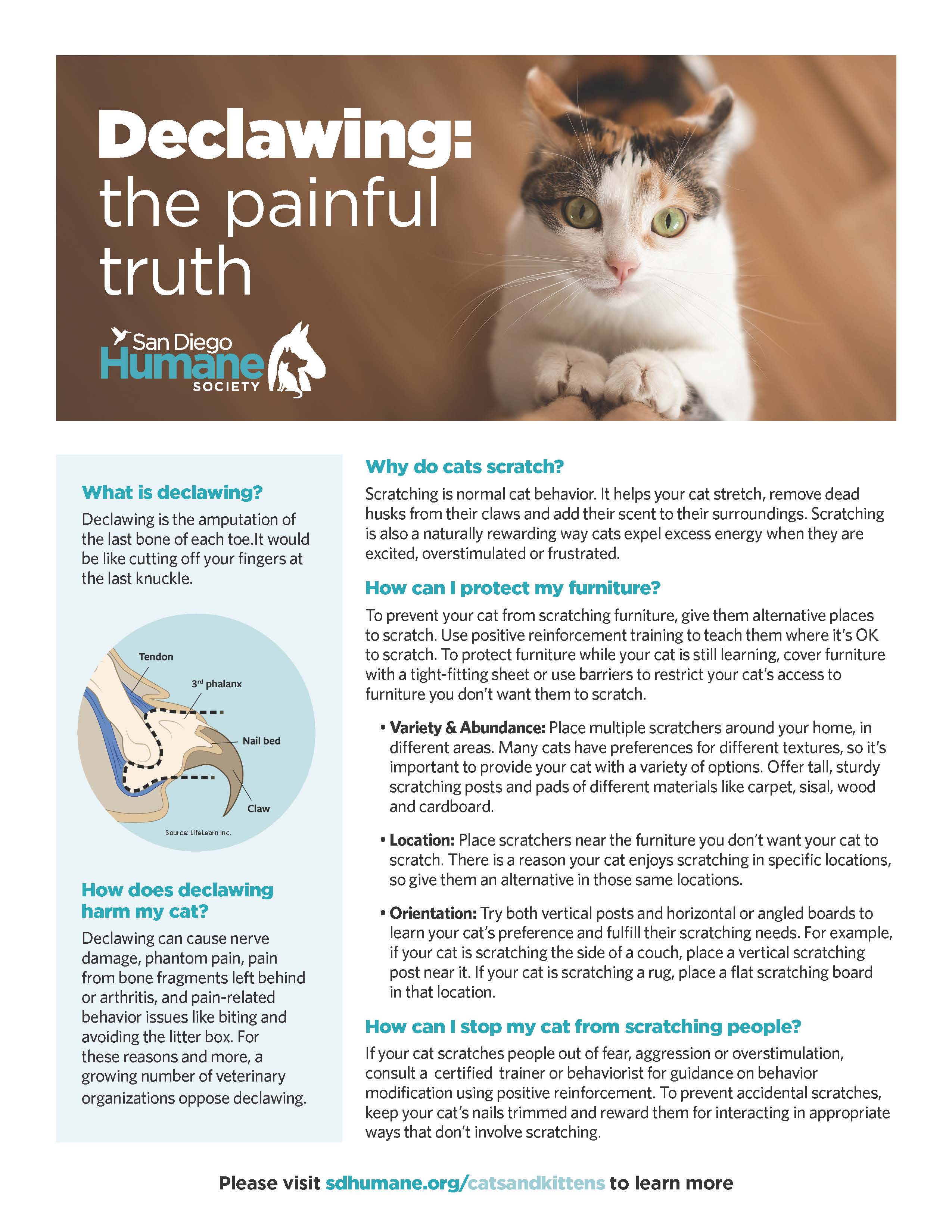Declawing Cats
What Is Declawing?
Declawing is a medical procedure to amputate each toe at the first joint (third phalanx bone). The medical term for declawing is onychectomy. Many people believe it’s the equivalent of cutting our fingernails, but this is not the case. It’s actually the equivalent of cutting off the last knuckle bone on our fingers.
Unintended Issues
Many people think that declawing their cat will be a simple solution to prevent unwanted scratching and clawing. However, declawing can actually cause other unintended issues like:
- Refusal to use their litter box.
- More aggressive behavior.
- Lack of protection — even if your cat lives indoors, if she were ever to get out, claws are her defense to protect herself.
Also, scratching and clawing are natural and important behaviors for cats! San Diego Humane Society does not recommend declawing a cat. Instead you can try:
- Trimming nails regularly.
- Buying scratching posts and training your cat that those are appropriate areas to scratch (not your couch!).
- Placing some wide, double-sided tape (two-sided carpet tape can be found at bigger home and
- hardware stores) on the areas that your cat likes to scratch. Since cats dislike sticky surfaces, they won’t want to touch these strips of tape, preventing scratching in these established places.
- Try a product called Soft Paws, flexible plastic caps that cover each cat claw completely. This prevents damage to your furniture while you train.
Physical Complications
- There is the possibility of an adverse reaction to general anesthesia.
- Your cat may experience a reaction ranging from mild discomfort to extreme pain.
- If the entire nail bed was not removed completely, the claws can grow back; regrowth of a nail due to improper removal of the bone at the time of surgery is called a sequestrum. If a nail grows back, you must take your cat to your veterinarian.
- Chronic back and joint pain may occur as shoulder and leg muscles weaken.
Behavioral Complications
- Cats can feel pain just like any other animal.
- The first time she tries to walk, run, jump, stretch, use the litter box and/or scratch, it may hurt; she may not want to walk because of the pain.
- She may stop playing, jumping and interacting with you because simply walking is too painful.
- Some cats get over it quickly; others may not be interactive for a long time.
- A declawed cat is more likely to bite if she feels threatened by another animal, a child or even her surroundings.
- They may be more likely to hide and become less social and active with you or other animals.
For more help, check out this article on cat scratching.
Additional Resources About Declawing:
- ASPCA Declawing Position statement (aspca.org)
- International Cat Care/International Society of Feline Medicine Position statement (icatcare.org)
- Pain and adverse behavior in declawed cats (research article, Journal of Feline Medicine)
- Living with a declawed cat - safe and stress free (Fear Free Happy Homes)
- Why cats need claws (Fear Free Happy Homes)


